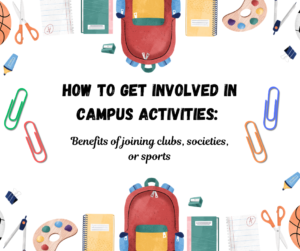Have you ever wondered what happens to a student’s health when academics take priority over physical fitness? In a fast-paced world where assignments, exams, and extracurriculars dominate a student’s life, the importance of a fitness regime often takes a back seat. Unfortunately, the lack of regular physical activity can lead to fatigue, reduced mental focus, and long-term health issues. So, how can we strike a balance? Shouldn’t fitness be an integral part of every student’s routine?
The Impact of Minimal Physical Training
Contrary to popular belief, staying healthy doesn’t demand hours in the gym. Studies suggest that even 20-30 minutes of moderate physical activity, such as brisk walking, bodyweight exercises, or yoga, can significantly improve a student’s physical and mental health. Regular activity strengthens the heart, boosts metabolism, and enhances brain function, making students more productive and focused.
Minimalist fitness training focuses on achieving maximum health benefits with minimal time, effort, and equipment. It’s particularly suited for busy individuals, like students, who struggle to find time for extensive workout routines. Here are its defining characteristics and how it contributes to overall health:
1. Time-Efficient
Minimalist fitness plans prioritize short, high-impact sessions (10–30 minutes) over long workouts.
High-Intensity Interval Training (HIIT) is a popular example, where exercises are performed in short bursts followed by brief rest periods.
How It Helps: Saves time while delivering significant cardiovascular and muscular benefits. A 20-minute HIIT workout can burn as many calories as a 60-minute moderate-intensity session.
2. Focus on Functional Movements
Exercises like squats, push-ups, planks, and lunges mimic everyday movements.
Emphasis is placed on strengthening the core and improving mobility.
How It Helps: Enhances balance, flexibility, and strength, reducing the risk of injuries in daily life.
3. Minimal Equipment
Often relies on bodyweight exercises or simple tools like resistance bands, dumbbells, or kettlebells.
Exercises can be done at home or in small spaces, eliminating the need for a gym.
How It Helps: Reduces costs and barriers to entry, making fitness accessible to everyone.
4. Customizable and Scalable
Workouts can be tailored to individual fitness levels and goals.
Beginners might start with 10 minutes of basic exercises, gradually increasing intensity or duration.
How It Helps: Encourages consistency and progress without overwhelming beginners.
5. Focus on Consistency Over Intensity
Stresses regular, short workouts instead of infrequent, intense gym sessions.
Prioritizes sustainable habits like daily walks or stretching routines.
How It Helps: Builds long-term discipline and integrates fitness seamlessly into daily life.
6. Incorporates Rest and Recovery
Acknowledges the importance of rest days and active recovery, such as light yoga or walking.
How It Helps: Prevents burnout and ensures that muscles have time to repair and grow stronger.
Risks of a Sedentary Lifestyle
Neglecting physical activity can have severe and long-term health implications for students. The combination of sedentary routines, poor posture, and unhealthy eating habits creates a dangerous cocktail of health risks that can affect both physical and mental well-being. Below are some critical risks associated with ignoring fitness:
1. Obesity and Overweight Issues
The lack of regular physical activity, coupled with calorie-dense diets, is a leading cause of obesity among students. Obesity increases the risk of developing chronic conditions like type 2 diabetes, cardiovascular diseases, and joint problems. According to a 2023 survey by the Indian Council of Medical Research, nearly 15% of urban schoolchildren in India were found to be overweight or obese.
2. Cardiovascular Diseases
A sedentary lifestyle reduces cardiovascular efficiency. The heart becomes weaker over time, leading to higher risks of high blood pressure, cholesterol imbalances, and heart diseases. Even young adults are now being diagnosed with heart conditions, a worrying trend that highlights the consequences of inactive lifestyles.
3. Musculoskeletal Problems
Students often spend long hours hunched over desks or laptops, leading to poor posture and musculoskeletal issues such as chronic back pain, neck stiffness, and weakened core muscles. Without regular movement or strength training, these issues can escalate into severe conditions like herniated discs or chronic joint pain.
4. Mental Health Decline
The mind is as vulnerable as the body when fitness is neglected. Lack of physical activity has been directly linked to increased levels of stress, anxiety, and depression. Physical exercise helps release endorphins, also known as “feel-good hormones,” which can significantly improve mood and reduce mental stress. Students who fail to incorporate fitness into their lives often experience burnout, lower self-esteem, and reduced productivity.
5. Metabolic Disorders
Poor physical fitness and unhealthy diets can contribute to metabolic disorders such as insulin resistance, metabolic syndrome, and fatty liver disease. These conditions, once associated with older adults, are now being diagnosed in teenagers and young adults due to prolonged inactivity.
Weakened Immunity
Regular exercise is known to boost the immune system by promoting healthy circulation, which allows immune cells to detect and fight infections effectively. Students with poor
fitness routines often experience weaker immunity, making them more susceptible to common illnesses such as colds, flu, and other infections.












